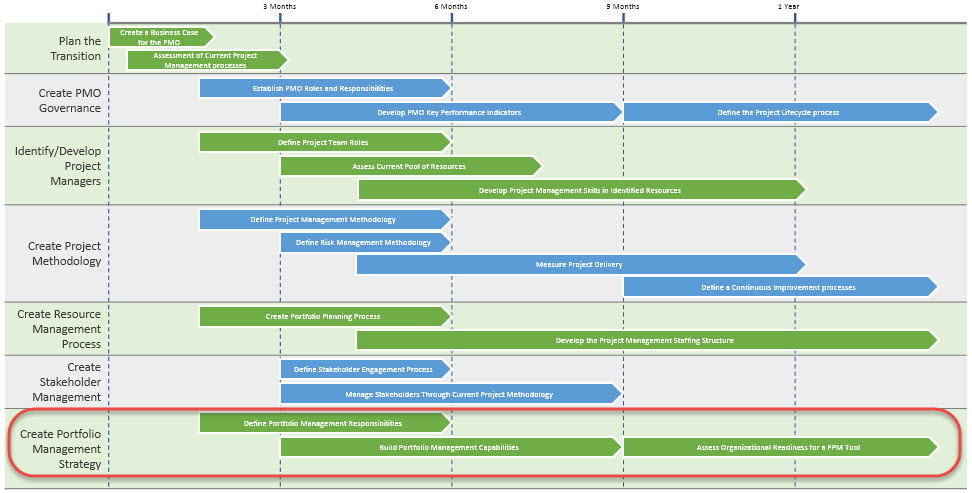We have finally come down to the last step of establishing a PMO within an organization. In the previous parts to this series, I explained the first six steps required in which to put in place the correct processes and people within the PMO structure that will yield the best results:
- Plan the Transition
- Create a Business Case for the PMO
- Assess Current Project Management Processes
- Create a PMO Governance
- Define Roles and Responsibilities
- Define PMO Key Performance Indicators
- Identify and Develop Project Managers
- Define Project Team Structure
- Assess Current Pool of Resources
- Develop Project Management Skills of Identified Resources
- Create Project Methodology
- Create a Project Methodology
- Define Risk Management Methodology
- Measure Project Delivery
- Develop Continuous Improvement Process
- Create a Resource Management Process
- Create Portfolio Planning Process
- Define a PMO Staffing Structure
- Create a Stakeholder Management Process
- Define Stakeholder Engagement Process
- Manage Stakeholders

Stage 7 – Create a Portfolio Management Strategy
Now that all the necessary pieces are in place, we can now look at creating a strategy to guide the entire portfolio to support business drivers. Let’s start this by:
Defining the Portfolio Management Responsibities
The organization will most likely rely upon the PMO to establish a set of project selection criteria that can help determine the justification and priority of each project within the portfolio. While some project proposals may have a small impact upon the overall business strategy, those projects may be within budget and have ample resource allocations to deliver a quality product. On the other side of the coin, a project proposal that may not have the correct budget or resourcing may need to be pushed through the selection process by giving it a higher priority due to governing regulations. A few examples of this portfolio criteria are:
- Number of Estimated Total Labor Hours to complete
- Number of Impacted Users
- Number of Countries Impacted
- Regulatory Related
- Company Health, Safety, & Environment Impacted
Building Portfolio Management Capabilities
Now that the Project Selection process is in place, the PMO will want to establish a way of determining when, and if, PMO maturity is reached so that more defined processes can be established. By doing so, the PMO maturity will drive a broader range of data that will be collected in order to give better KPI metrics and BI reporting.
Assessing a Project and Portfolio Management (PPM) Tool
By this time, if it already is very apparent, the PMO should be using a PPM Tool in order to capture project data and produce project and portfolio reports. If the PMO is not already using a PPM tool, it would be best to research the numerous tools available. Since there are a multitude of PPM tools, have the PMO narrow the options to a handful of tools that have the capability to work in the current environment. Once these options are narrowed, it may be beneficial to request a demo or proof of concept to see the tools in action and to also view the scalability of each tool in order to match the growing organization. Doing so, will allow the company’s decision makers to compare and determine the appropriate PPM tool that will best fit the company’s immediate and future needs.
Remember that establishing a PMO is about transforming current project management process to allow a company to do the right things at the right time. When planned and executed properly, implementing a PMO within an organization can optimize efficiencly and increase overall performance.
—–
Interested in how EPMA can help you with your project schedules? Looking for a PPM Tool? Does your company want a PMO? Contact us today at 1.888.444.EPMA or [email protected].
Thanks for reading! Please feel free to leave comments below or check out our other blogs on Microsoft Project, Project Server, SharePoint and Project Management Methodology.
For more details & kick start your project management journey, sign up for our Microsoft Training Classes or send us an email.
I hope you find this blog post helpful. For more tips and tricks on Project Management, please visit www.epmainc.com

